 United Kingdom (1972)
United Kingdom (1972)
Self-Propelled Gun – 1 Prototype Built
The Chieftain CTR ‘Jagdchieftain’
This prototype British Cold War self-propelled gun has received the popular nickname of the ‘Jagdchieftain’ because of its similarity to the WW2 German Jagdpanther anti-tank self-propelled gun (SPG). Its correct designation is the Chieftain Casement Test Rig (CTR). This is the name given to the vehicle by William Suttie in his book ‘Tank Factory.’ The Tank Museum, Bovington call it the ‘Concept Test Rig.’
It was a 1972 joint project between UK and the Bundeswehr (West German Army). In Germany, tank designers had been experimenting with the Panzer VT1-1 and VT1-2 Leopard 2 chassis SPG armed with twin 120 mm cannons. The Casement Test Rig (CTR) had a semi-fixed single gun. The gun was set in a casement hull superstructure on a Chieftain tank chassis. A lot of aluminum was used in an effort to reduce weight.
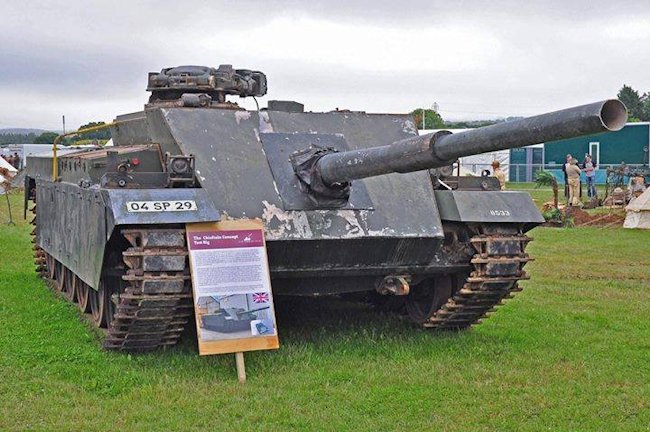
This prototype test vehicle is often called the Jagdchieftain but its correct name is the Concept Test Rig (CTR) – Photo: Colin Rosenwould Tankfest 2011
In the early 1970s, NATO believed that to deal with an overwhelming force of Soviet armor the Allies would fall back while inflicting as many casualties as possible until more troops and tanks could be shipped into Europe from America and Britain. The designers wanted to create an anti-tank SPG that had a low profile, a powerful gun and that could travel just as easily in reverse as forward. It was to be the ideal ambush weapon that could wait for the enemy to appear in a concealed location then open fire inflicting as much damage as it could before quickly reversing out of danger to its next preplanned ambush location. For survival, the front armor would be thick and sloped.
This was not the first time a British casemated self-propelled gun had been proposed. There were the class 40, 50, 60 tanks as well as rival Vickers A,B,C,D designs and the Alvis external concept. None progressed further than wooden mockups.
The Engine
Underneath the superstructure is basically a conventional Chieftain chassis, In order to conform with British and German requirements it could be fitted with the British Leyland L60 engine or the Leopard tank ten cylinder MTU multi-fuel power pack preferred by the Federal German Army of that time. The chassis was slightly widened to accommodate the MTU power pack.
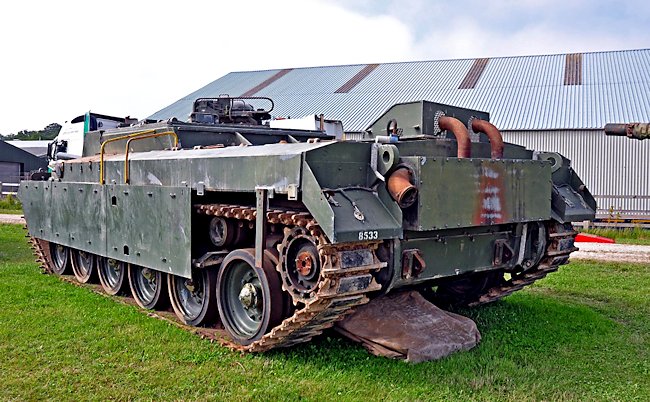
The exhaust system was slightly different to that on the operational Chieftain tank in that it had a raised box on top of the chassis. The rear stowage boxes are missing – Photo: Colin Rosenwould Tankfest 2011
The Armor
The front sloped glacis plate was to be heavily armored against all current and future anti-tank (AT) weapons in the 1980-90s. Had the ‘Jagdchieftain SPG’ entered production, it seems probable that the new Chobham armor would have been applied. This was not fitted to the prototype but was simulated by the addition of 5 tons of lead plate covered in sheet metal.
The prototype’s superstructure was fabricated from aluminum in order to try and keep the weight down but even so, the Mechanised Vehicle Experimental Establishment (MVEE) estimated the final weight would be 55 tons. The term ‘Chobham armor’ has become the common generic term for composite armor developed in the 1960’s at the British tank research center on Chobham Common, Surrey, England.
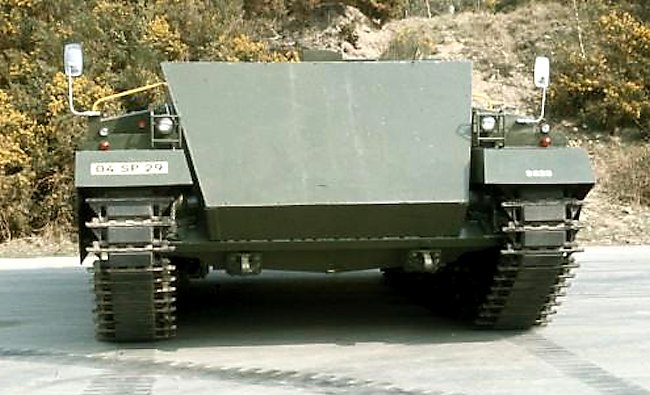
Front view of the Chieftain Casement Test Rig (CTR) SPG’s sloped front armour plate prior to the gun being fitted
The Casement Test Rig SPG was based on the Chieftain tank FV4211 nicknamed the “Aluminium Chieftain”. After the project was canceled, the CTR was kept in storage to monitor the hull welds to gain information on deterioration of the aluminum armor.
The Gun and Crew
The main armament was intended to be the British 120 mm L11 rifled gun, although for trial purposes only a dummy tube was installed. Unlike the Swedish S-Tank, which had a fixed gun, the British CRT self-propelled gun concept allowed the gun to elevate from −10 to +20° and traverse +/− 2°, allowing fine tracking without moving the hull.
The crew of three comprised a commander and two driver/gunners. One of the drivers and the commander were able to drive the vehicle forward from their positions, while the second driver/gunner had a rear vision block to allow him to drive it backwards, so they could reverse away from the enemy after ambush without showing their rear. This enabled the vehicle to use the ‘Shoot and Scoot’ tactic.
Development of the Casement Test Rig SPG was inspired by Swedish S-tank that had the same driving configuration. Two of these Swedish vehicles had been tested at Bovington in 1968. During the development of the CRT a further ten S-Tanks were borrowed for a more intense assessment during a military Exercise called ‘Dawdle’ in Germany.
Trials
The Concept Test Rig was assembled by the Fighting Vehicle Research & Development Establishment (FVRDE) at Chertsey but trials at Woolwich confirmed what had been seen in Germany on Exercise Dawdle: accurate gun laying was inferior to a turret in terms of speed of engaging targets and that it could not fire accurately on the move. The project was dropped and the vehicle was eventually sent to the Tank Museum at Bovington in 1990.
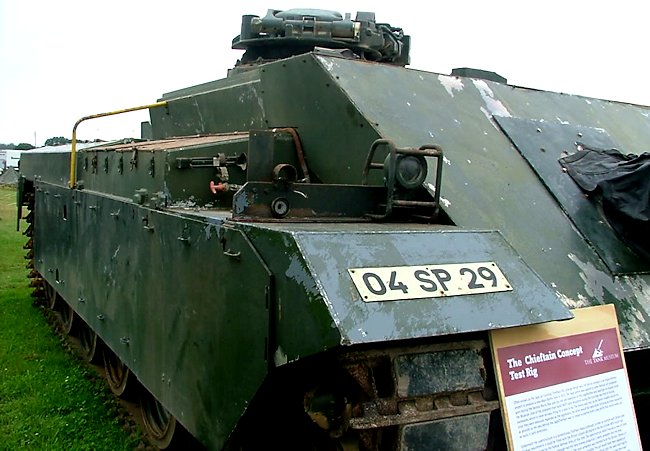
Chobham armor was not fitted to the prototype, but it was simulated by the addition of 5 tons of lead plate covered in sheet aluminium alloy – Photo – Colin Rosenwould Tankfest 2011
FV217 Conqueror self-propelled gun proposal
This design did not get past the wooden model stage. A prototype was not built mainly for the same reasons the Chieftain Casement Test Rig (CTR) SPG project was dropped. Some call it the JagdConqueror because of its resemblance to the German WW2 Jagdpanther but that was never its official name. It was called the Conqueror Casement Test Rig (CTR) Self-propelled gun (SPG). It was to be fitted with a 120 mm gun.
It seems a strange thing to do as the Conqueror tank was already armed with a 120 mm gun but this vehicle would have been simpler and cheaper to build (a factor that would appeal to politicians). It would also have had a lower profile and thus have been harder to target. It would have been an ambush weapon that would sit in wait for advancing Soviet tanks and fire at them from cover, when they came within range of its gun. It would not have been as adaptable as the tank version.

CTR Specifications |
|
| Dimensions (L-W-H) | 24’6″ (without gun) x 11’5″ x 9’5″ 7.51 (without gun) x 3.5 x 2.89 m |
| Total weight, battle ready | 55 tons (11000 Ibs) |
| Crew | Commander and two drivers who also serviced the gun. |
| Propulsion | British Leyland diesel L60, 695 bhp or Leopard tank ten cylinder MTU multi-fuel power pack |
| Speed | 48/30 km/h road/cross-country (29.82 mph/18.64 mph) |
| Range/consumption | 500 km (310.68 miles) |
| Proposed Production Armament | British 120 mm L11 rifled gun |
| Proposed Production Armor | Chobham Armor |
| Total production | 1 prototype |
Sources
Ed Francis – The FV3805 Restoration Project
Chieftain by Rob Griffin
Colin Rosenwould
Tank Museum, Bovington, Dorset, England
Steve Osfield
Tank Factory, William Suttie, 2015
Gallery

Illustration of the Chieftain test rig by David Bocquelet
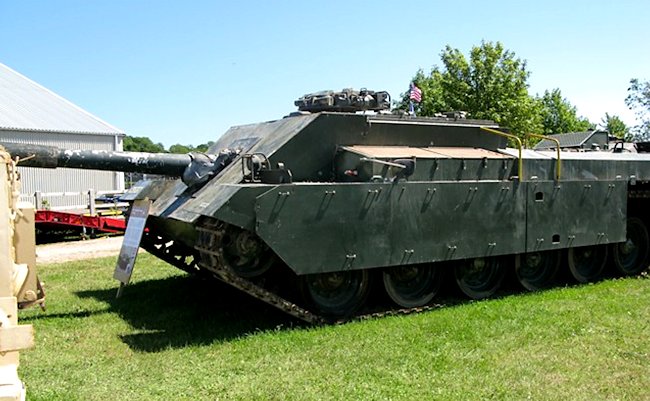
Side skirts were used to protect the side of the vehicle. If it had entered production, Chobham Armour panels would have been attached on top of the skirt panels – Photo: Colin Rosenwould Tankfest 2011
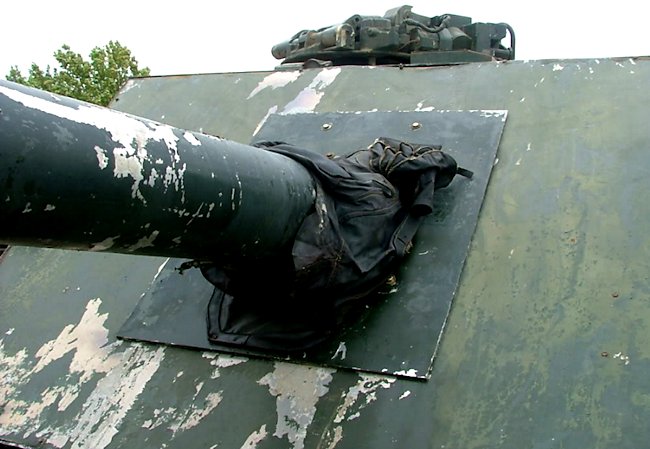
The gun and gun mantlet on the Concept Test Rig SPG were not real units – Photo: Colin Rosenwould Tankfest 2011
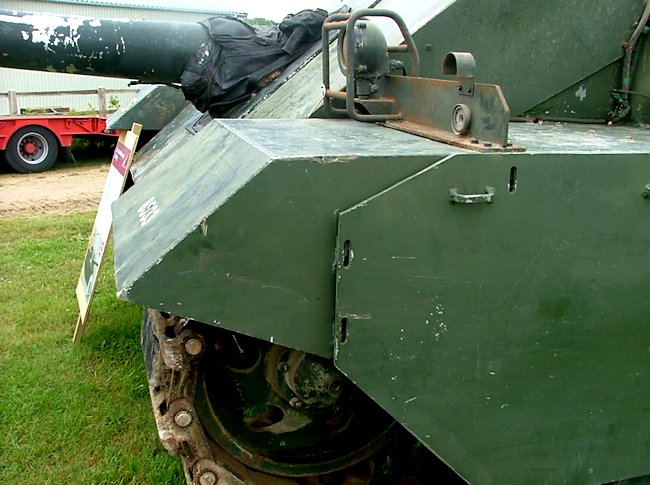
The front stowage unit behind the head light on top of the track guard is missing on the CTR prototype – Photo: Colin Rosenwould Tankfest 2011
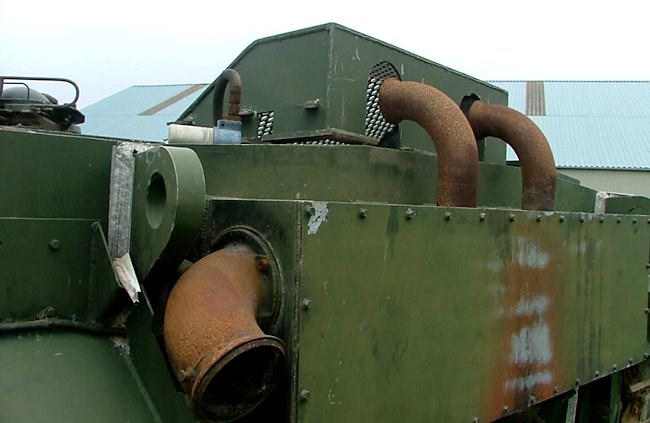
The top mesh exhaust box was not used on the production models of the Chieftain tank – Photo: Colin Rosenwould Tankfest 2011
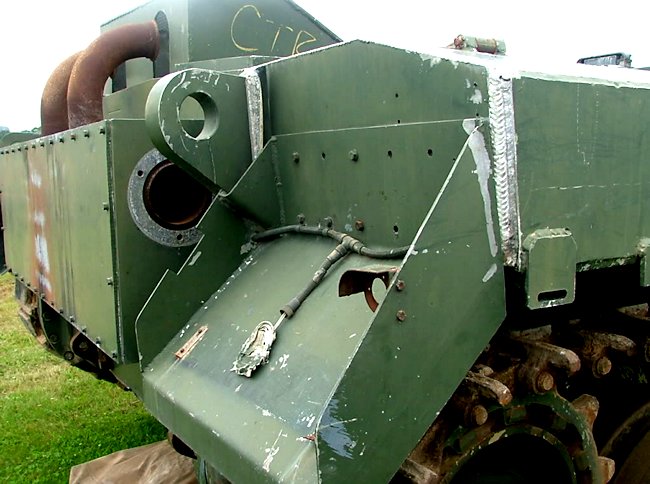
The downward pointing exhaust pipe and rear stowage box are missing – Photo: Colin Rosenwould Tankfest 2011
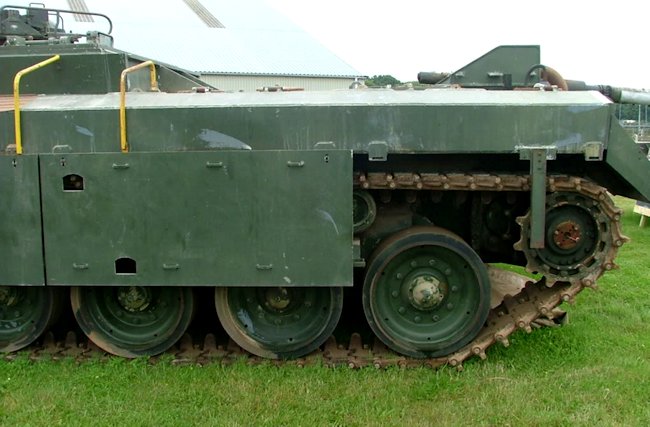
The rear skirt panel has been removed. You can see the support bracket – Photo: Colin Rosenwould Tankfest 2011
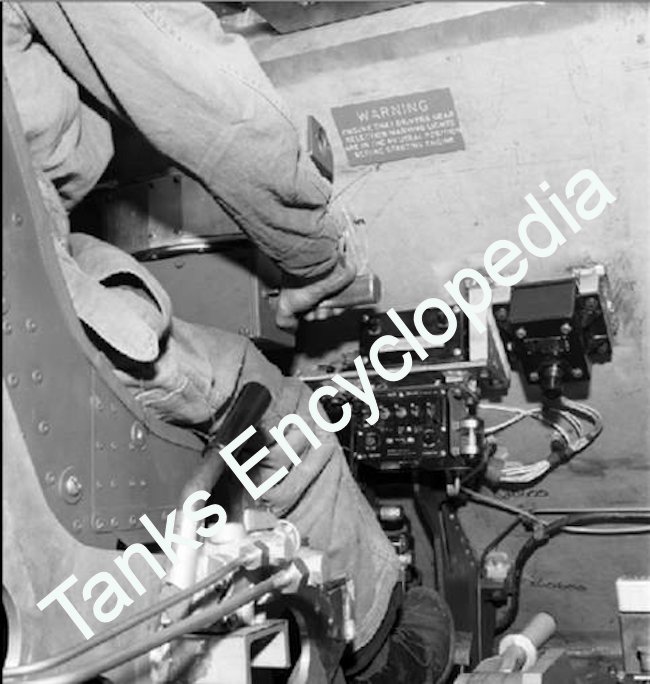
The handlebar steering concept was used on the CTR. It was also tested on the FV432 Armoured Personnel Carrier (FV432 APC) – Photo: Ed Francis
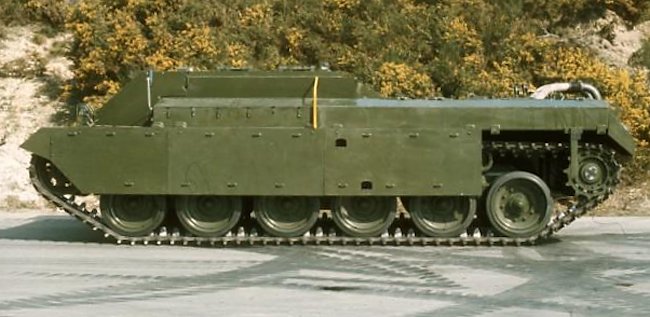
Chieftain Casement Test Rig prototype without the gun fitted
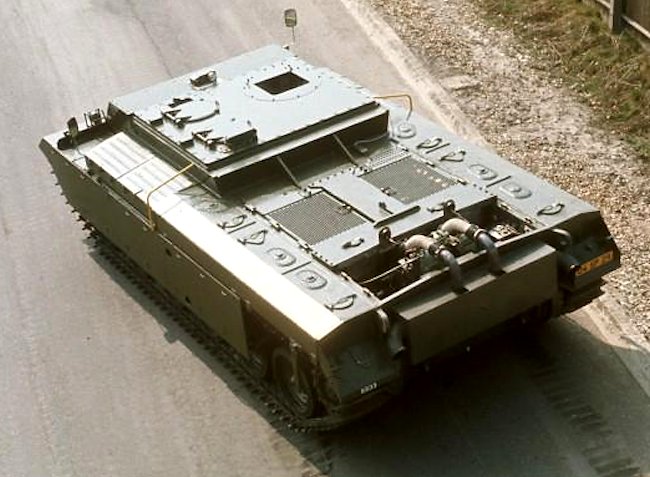
Top view of the crew hatches and engine covers on the Chieftain CTR self-propelled gun


3 replies on “Chieftain Casement Test Rig (CTR) SPG”
This thing kinda looks like the “Badger” on world of tanks.
The FV217 mentioned in the Article is the historical project that the ‘Badger’ is based on
TE Moderator
Two things, could you do an article on the FV217 Badger from WoT, and in the spec sheet you list, 55 tons, 11000 pounds, not 55 tons, 110000 pounds